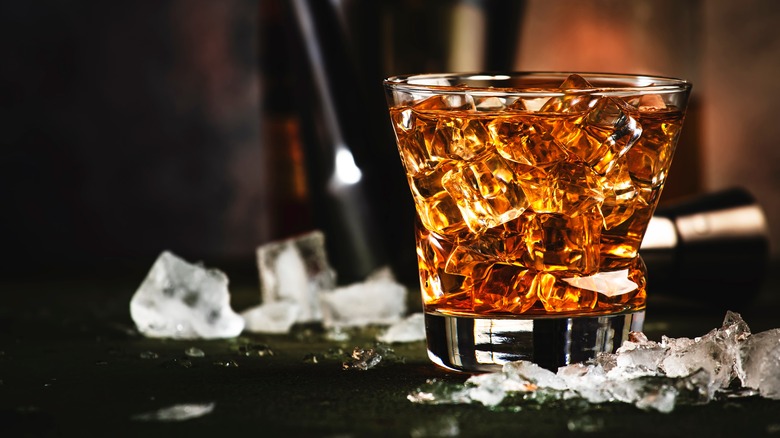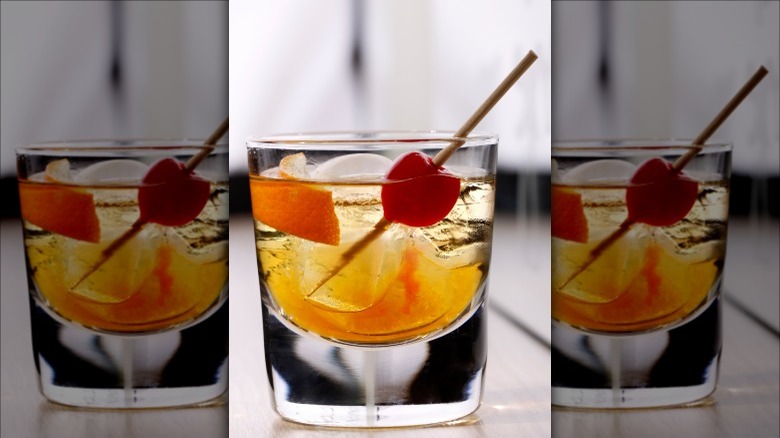The Godfather Cocktail's Name Totally Checks Out
Have you ever had a Godfather? We're not talking about some guy who awkwardly held onto you as you squirmed in the baptismal font, nor a scary dude holding a horse's head and making you an offer you couldn't refuse. Please, we're a food site here! That means, of course, that we're discussing the Godfather drink. (Plus, the title of this piece does say "cocktail," after all.)
While we don't know exactly who invented this drink, nor where or why, we do have a pretty good idea of when. It dates back to the 1970s, the decade when both "Godfather" and "Godfather II" were released. As no one has stepped forward to take credit for creating the drink, we don't have any first-person confirmation that it was, in fact, named after the movie; but it seems like a pretty sure bet. What's more, actor Marlon Brando (aka Don Corleone) is said to have been a fan of this whiskey/amaretto drink and may have been responsible for helping to popularize it back in the day.
The Godfather drink also launched a few sequels
If you make the Godfather 1970's-style with equal parts of whiskey and amaretto, it's a fairly sweet drink. Some bartenders today, however, prefer to dial back the almond liqueur to the point where the ratio is 8:1, giving just a hint of sugar. The preferred whiskey base is usually Scotch, but there are those who prefer bourbon and some even use Irish whiskey.
There are also a few spinoff drinks, including the Godmother, which replaces the whiskey with vodka (Wonder why they didn't call it the Russian Mob, instead?); the Godchild, which is basically a Godmother + cream; and the French Connection (another '70s movie reference), which uses cognac as a base.
While the Godfather did fall out of favor after its disco-decade heyday, it had a revival of sorts in the twenty-teens. At the time, new millennium bartenders were all about giving trendy makeovers to once-despised '70s drinks, and the Godfather was one of the drinks they chose to glow up. One San Francisco establishment added maraschino liqueur and amontillado sherry to its version; a Brooklyn bar made a Godfather II with sarsaparilla tincture; while a Manhattan mixologist's Godfather included sherry, blood orange amaro, and bee pollen. What would Don Corleone have thought of these hipsterrific new drinks? We've no idea, but then, it's not like anyone would ever have dared to ask. (Or to serve him such a thing, for that matter, which probably answers the question.)

